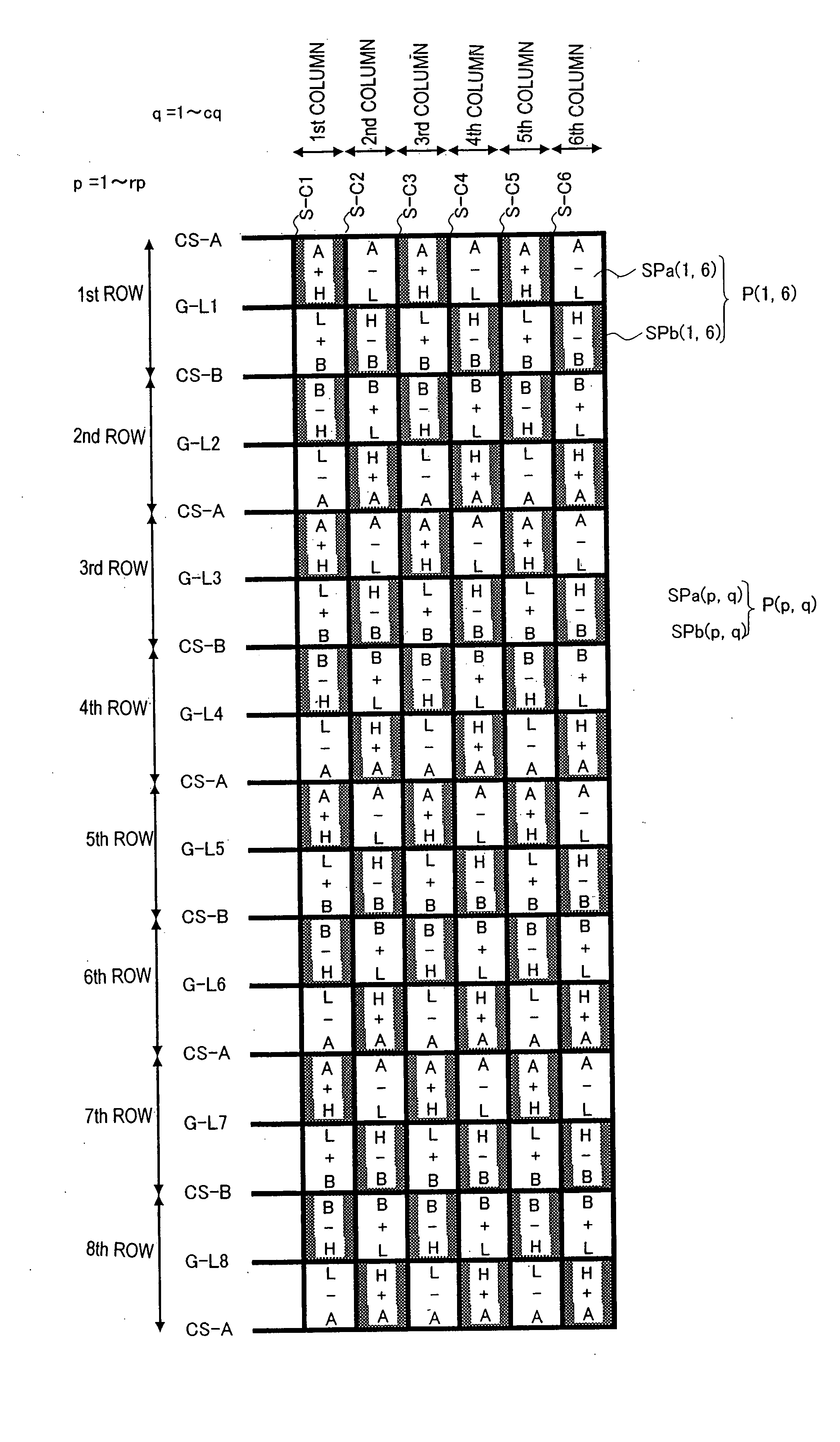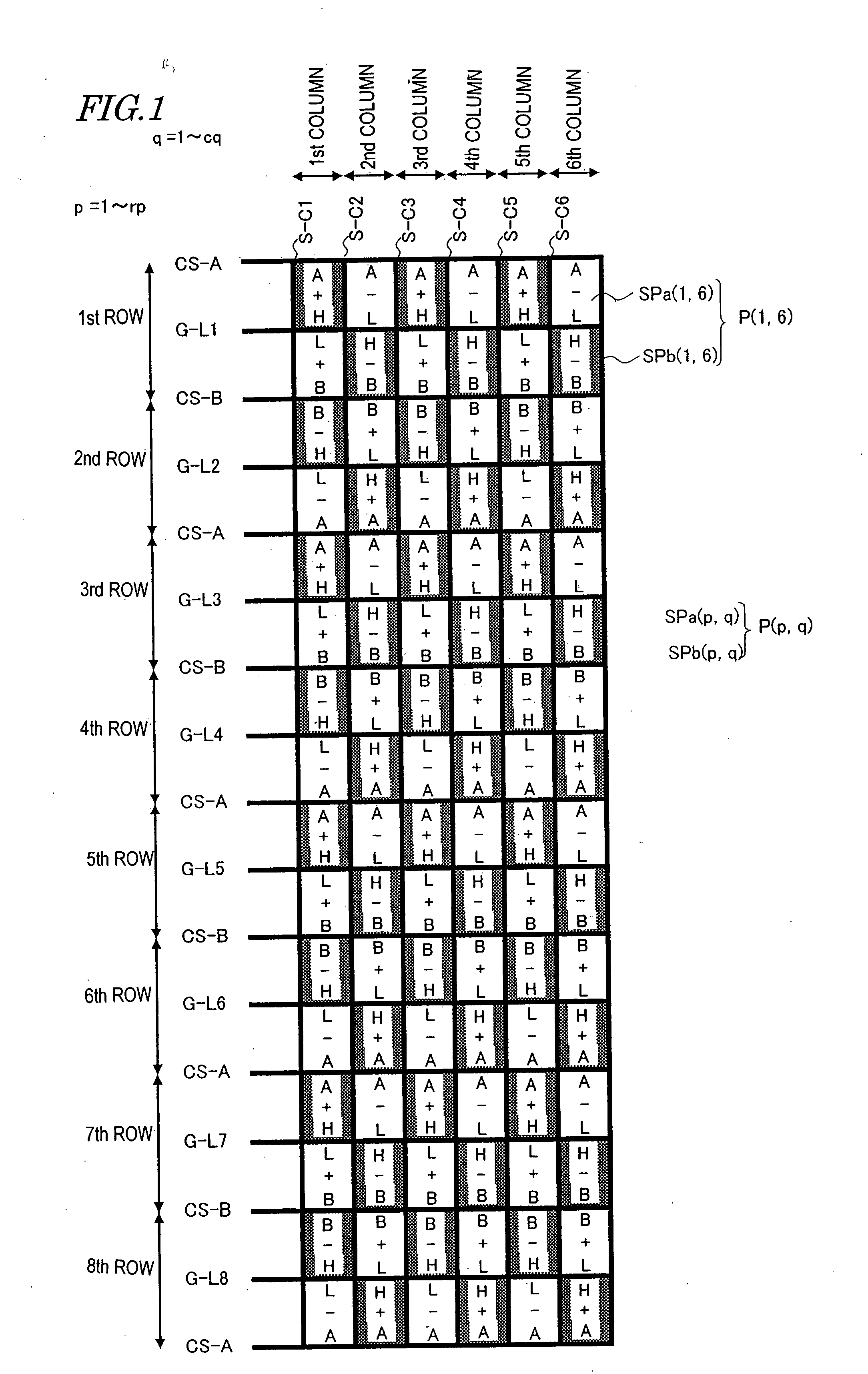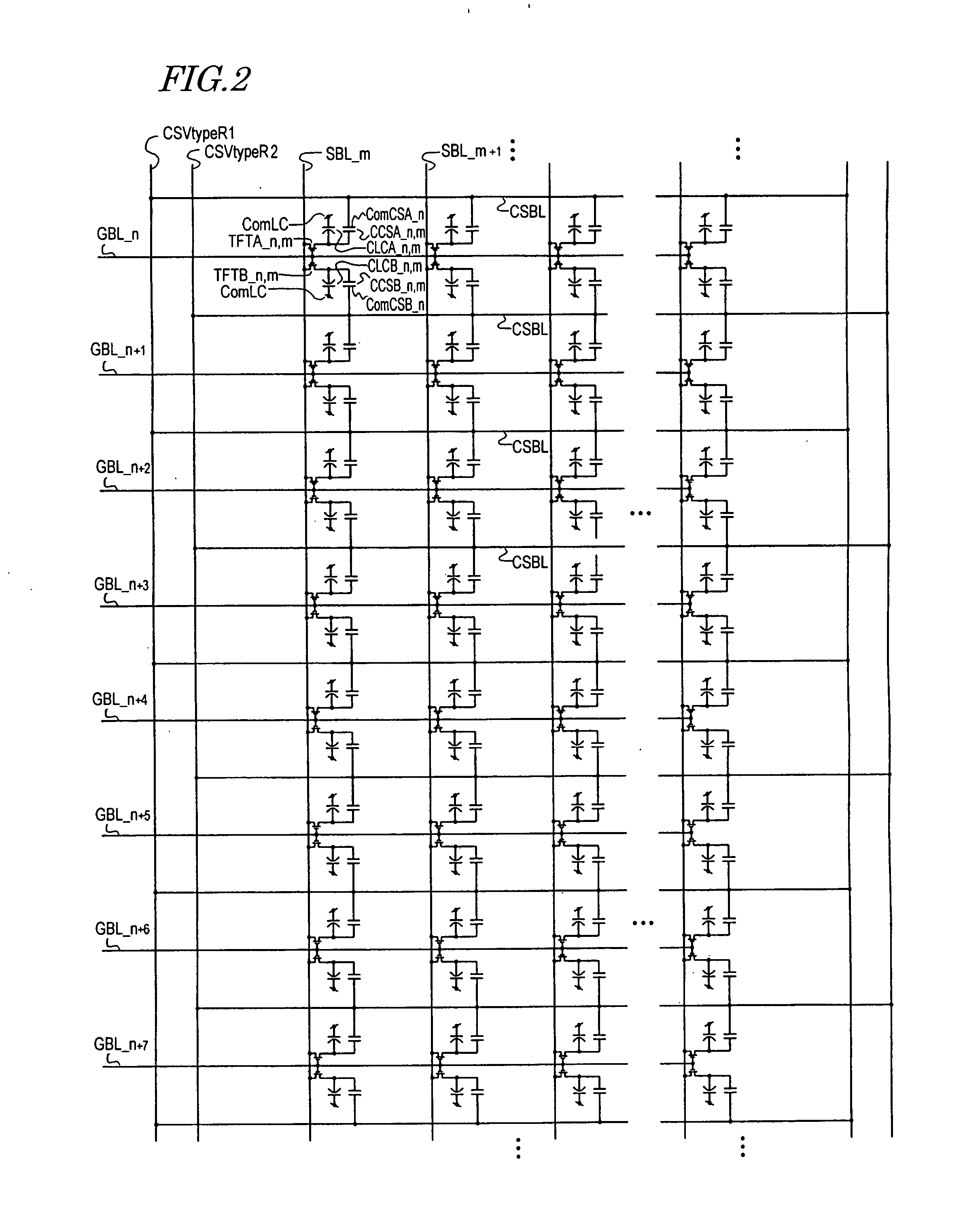Liquid Crystal Display Device
a display device and liquid crystal technology, applied in the field of liquid crystal display devices, can solve the problems of deteriorating display quality, difficult to make panels that realize high contrast ratio, and difficulty in achieving viewing angle characteristics, so as to avoid deterioration in display quality
- Summary
- Abstract
- Description
- Claims
- Application Information
AI Technical Summary
Benefits of technology
Problems solved by technology
Method used
Image
Examples
embodiment 1
[0450] First, an exemplary method for driving a Type I liquid crystal display device will be described with reference to FIGS. 42A through 42D. The liquid crystal display device of this example may be the TypeI-1 LCD shown in FIG. 31(a), for example.
[0451] In this example, a video signal with a V-Total of 803H, a V-Blank of 35H, and a V-Disp of 768H is received, CS voltages of ten phases are supplied, the first waveform (in the first period) of the CS voltage oscillates between first and second voltage levels in an oscillation period of 10H (which is the first cycle time PA), and the frame inversion drive is carried out by the 1H dot inversion technique. FIG. 42A shows the gate voltages supplied to a gate bus line G:001 for the first row and a gate bus line G:766 for the 766th row, the CS voltage and the voltage applied to pixels (only the voltage applied to bright subpixels is shown). In FIGS. 42B to 42D, the gate voltage is omitted and only the CS voltage and the voltage applied ...
embodiment 2
[0460] Next, another exemplary method for driving a Type I liquid crystal display device will be described with reference to FIGS. 43 and 44. The liquid crystal display device of this example may be the TypeI-1 LCD shown in FIG. 31(a), for example.
[0461] In this example, a video signal with a V-Total of 804H, a V-Blank of 36H, and a V-Disp of 768H is received, CS voltages of ten phases are supplied, the first waveform (in the first period) of the CS voltage oscillates between first and second voltage levels in an oscillation period of 10H (which is the first cycle time PA), and the frame inversion drive is carried out by the 1H dot inversion technique.
[0462] The CS voltages have almost the same waveforms as the first preferred embodiment described above. However, as V-Total increases by 1H, the first period remains 765H but the second period increases by 1H to 39H. If the second period of 39H is evenly split into two periods to be allocated to the first and second voltage levels, ...
embodiment 3
[0466] Next, still another exemplary method for driving a Type I liquid crystal display device will be described with reference to FIGS. 45A and 45B. The liquid crystal display device of this example may be the TypeI-1 LCD shown in FIG. 31(a), for example.
[0467] In this example, a video signal with a V-Total of 804H, a V-Blank of 36H, and a V-Disp of 768H and a video signal with a V-Total of 803H, a V-Blank of 35H, and a V-Disp of 768H are received alternately every other frame, CS voltages of ten phases are supplied, the first waveform (in the first period) of the CS voltage oscillates between first and second voltage levels in an oscillation period of 10H (which is the first cycle time PA), and the frame inversion drive is carried out by the 1H dot inversion technique.
[0468] The CS voltages have almost the same waveforms as the preferred embodiments described above. However, when V-Total is 804H, the first period is 765H but the second period is 39H. If the second period is even...
PUM
 Login to View More
Login to View More Abstract
Description
Claims
Application Information
 Login to View More
Login to View More - R&D
- Intellectual Property
- Life Sciences
- Materials
- Tech Scout
- Unparalleled Data Quality
- Higher Quality Content
- 60% Fewer Hallucinations
Browse by: Latest US Patents, China's latest patents, Technical Efficacy Thesaurus, Application Domain, Technology Topic, Popular Technical Reports.
© 2025 PatSnap. All rights reserved.Legal|Privacy policy|Modern Slavery Act Transparency Statement|Sitemap|About US| Contact US: help@patsnap.com



